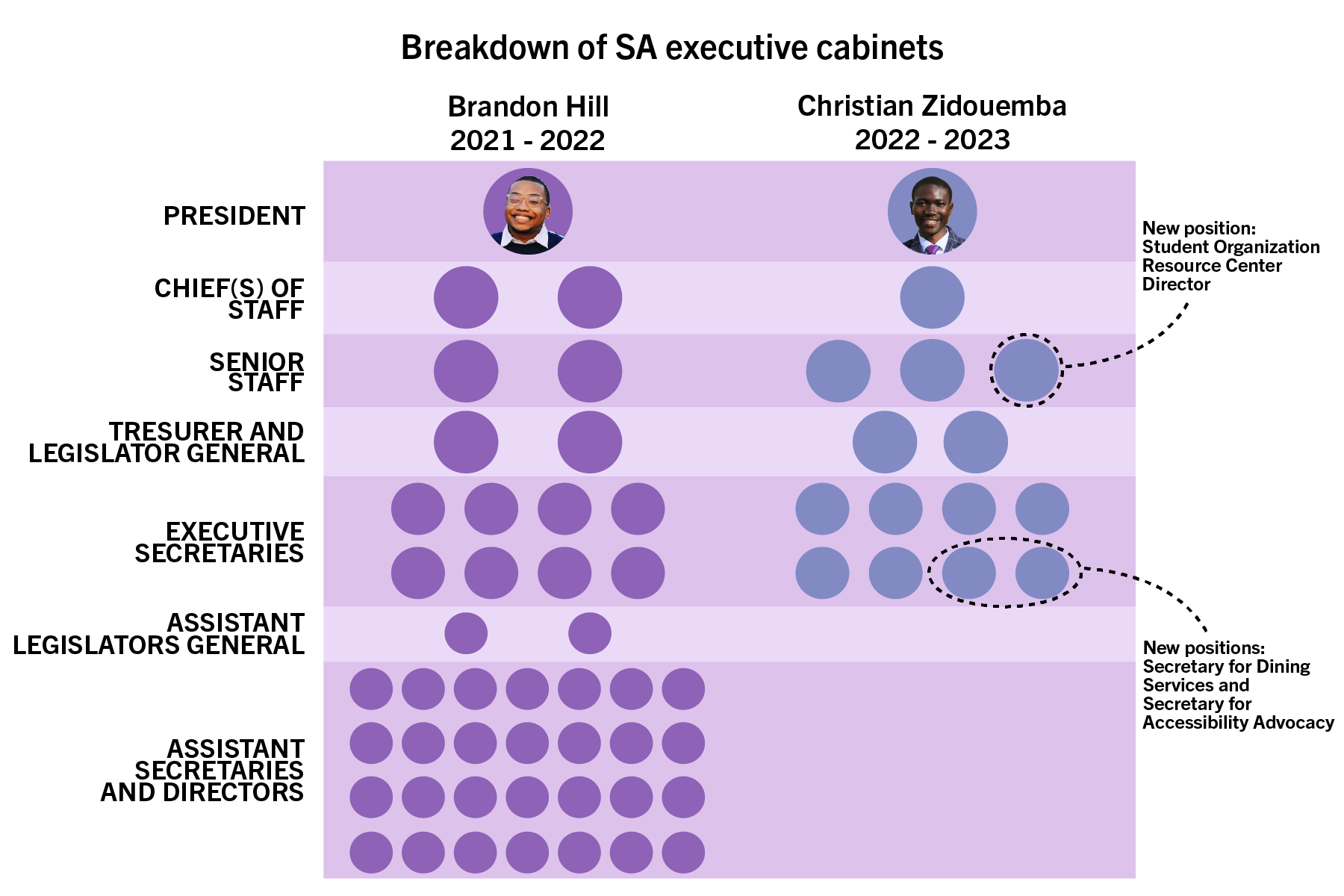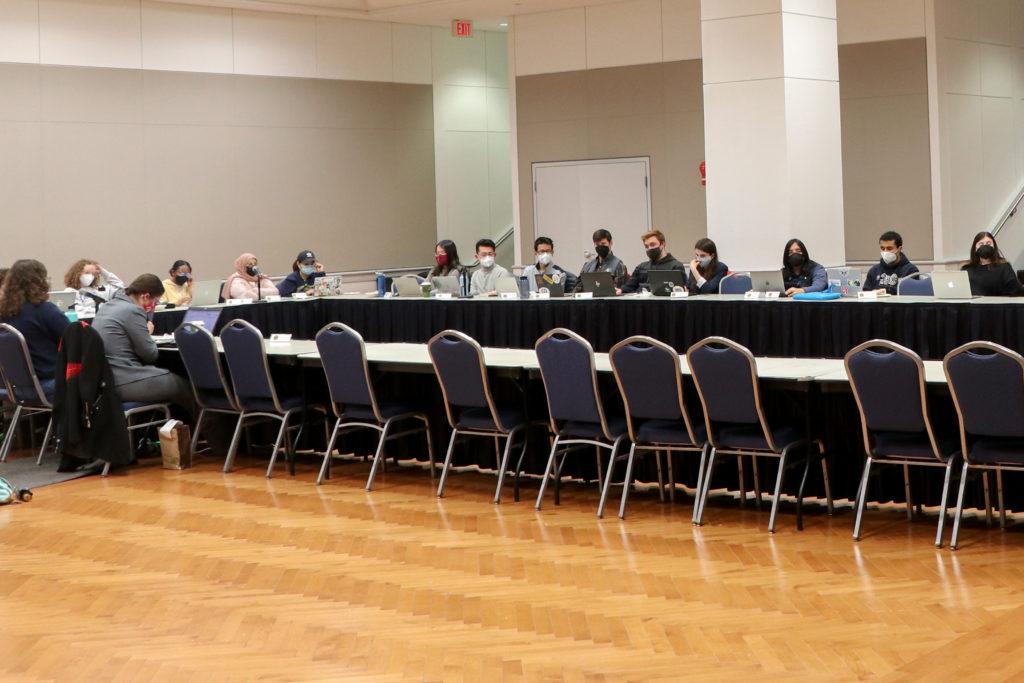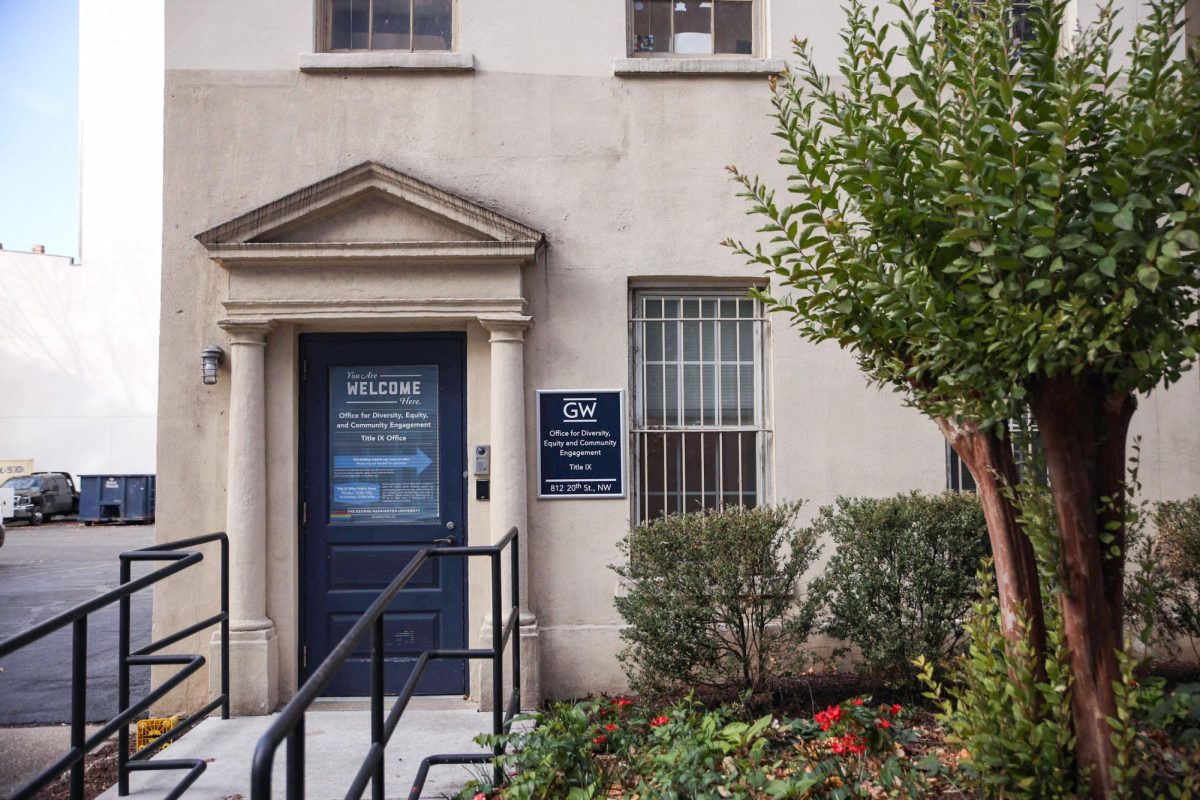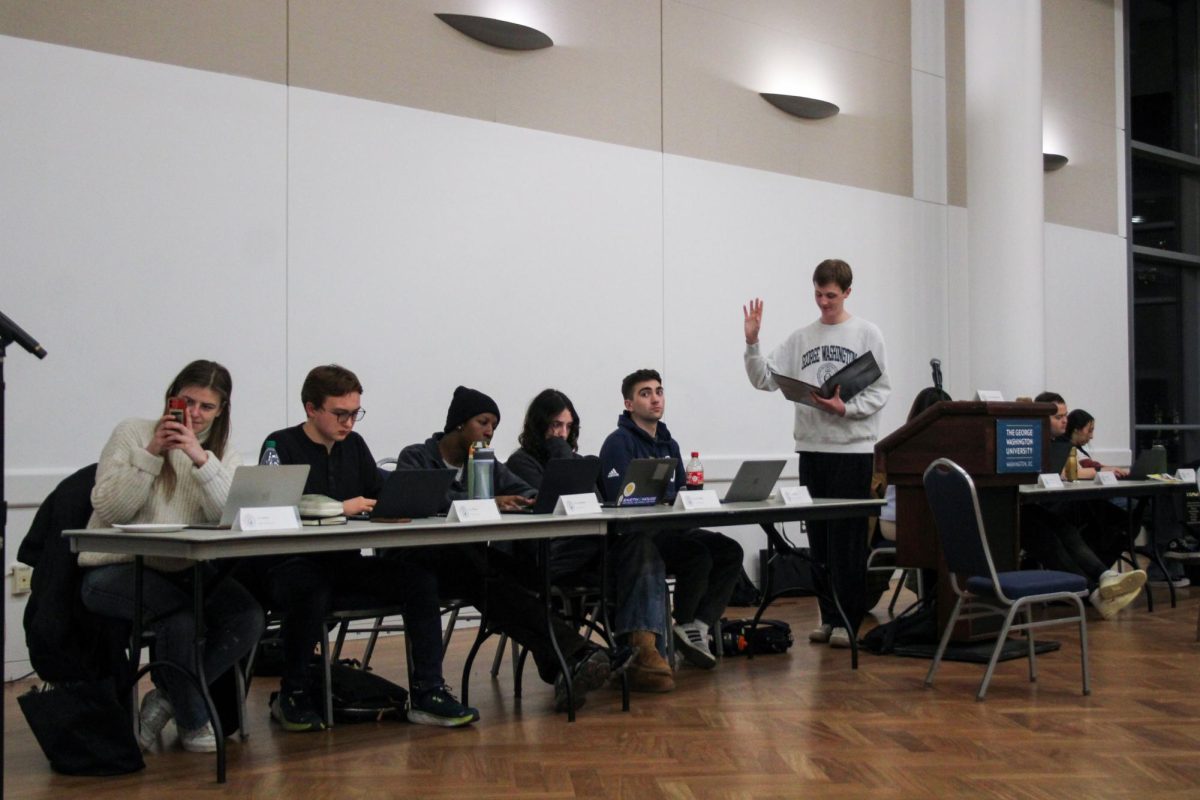Incoming Student Association President Christian Zidouemba said he plans to slash this year’s 44-member executive cabinet down to 14 members in the upcoming term.
Zidouemba said his planned, 14-person cabinet will focus on six “critical issues” – sexual assault prevention and response, accessibility on campus, hiring a new president, fundraising with alumni, increased student outreach and student code of conduct revisions – and will work more closely with SA senators. This year’s 46-person executive cabinet advised SA senators on legislation and worked with administrators on issues like diversity, equity and inclusion, interfaith engagement and internal oversight.
“There is a range of evermore important issues that need to be addressed in the student body, and there is a temptation to create a position for every issue,” Zidouemba said in an email. “However, in the past, this has created confusion in the legislative branches, where cabinet and senators worked separately on the same issues without notifying each other.”

Nicholas Anastacio | Graphics Editor
Executive cabinet members said this year’s increased cabinet size created confusion over which department projects would fall under.
Zidouemba said incoming executive cabinet members will be part of his discussions with the legislative branch, student organizations and administrators to limit confusion across the SA.
“We will end the squabbling, backhanded drama that often accompanies SA politics and put the needs and concerns of students first,” he said. “For this, I will be working closely with EVP Xu, and I expect the Student Association Senate to implement a similar philosophy.”
SA President Brandon Hill, Vice President Kate Carpenter and chiefs of staff Catherine Morris and Zachary Nosanchuk oversee the cabinet, which is split into eight departments – the treasury, internal relations, academic affairs, the legislator general, student life, campus services, community and government relations and diversity, equity and inclusion. Within the departments, executive secretaries oversee between one and seven assistant secretaries who direct about 18 project assistants.
Morris and Nosanchuk said this year’s larger cabinet helped members manage their workloads and allowed them to focus on more specialized work, like securing class recordings for students who could not attend in-person classes. They said the cabinet struggled through negative “online remarks” and less urgency for “student action” from the student body.
Nosanchuk said enrolling students in the U-Pass program was the executive cabinet’s top accomplishment this year. He said the executive cabinet also continued the efforts of previous SA administrations and held discussions with officials to finalize GW’s entry into the program.
“I think this is something that’s been many years in the making, which I think is the case for a lot of projects within the SA, and I think it’s easy for a project to just kind of fall by the wayside and then the next administration picks it up and kind of starts all over,” Morris said.
Morris and Nosanchuk said they will remain available as resources for the incoming administration, and combining knowledge of GW as an institution with an outsider perspective will improve the SA.
Morris said that the executive branch will release a SA-wide, end-of-year report on its accomplishments and developments during the cabinet’s past term, as it has done in years past.
Julia Kerrigan, the assistant secretary for interfaith engagement, said the increased size of the cabinet kept all members involved in the SA. She said she was proud the cabinet enrolled GW in U-Pass so students could more easily use the Metro to access the District and attend local religious ceremonies, like ones at the church she attends in Dupont Circle.
“I think there was a role for everyone, and it was good to have certain people specializing in things,” she said.
John Hicks – the assistant secretary of LGBTQ+ advocacy under the diversity, equity and inclusion department of the executive cabinet – said cabinet members, senators and student organizations like Allied in Pride worked to update GW platforms like GWeb, Google Suite and Blackboard to allow students to change their preferred pronouns in the fall. But, he said SA members were often unsure which cabinet would be assigned certain work, which hindered some projects he wanted to accomplish.
“It was kind of hard to tell if somebody was already working on something,” he said. “Sometimes people would already have things going, and then you try to pick up a similar issue and it would just kind of get complicated.”
Hicks said although the chiefs of staff were available as a point of contact, he did not always want to reach out to them for every single departmental confusion, like differences between the web development and digital strategy sub-departments and the role of the secretary and undersecretary.
“There’s just a lot of different, very niche things that are hard to differentiate in between,” he said. “But I also think that that’s bad for the students who are trying to find somebody and talk to them.”
Hicks said the larger cabinet created logistical difficulties, like multiple icebreaker sessions to introduce members to each other that took up extra time. He said Zidouemba’s proposed smaller cabinet can allow for “better cohesion, communication and advocacy.”
“I hope that a 14-member cabinet will help find a good balance,” he said in an email. “But I would also say if things come up to warrant a new position that should be an option.”








